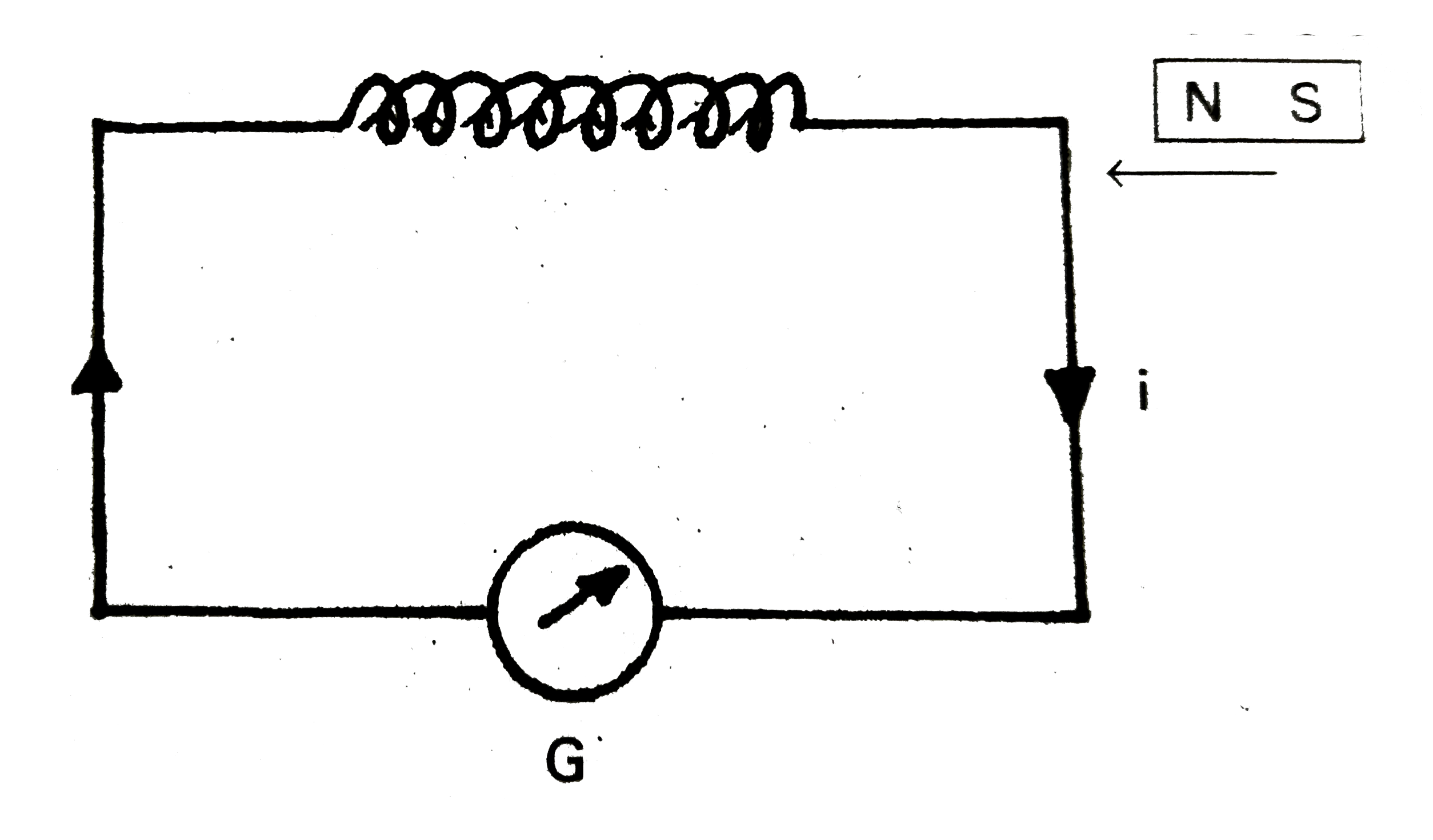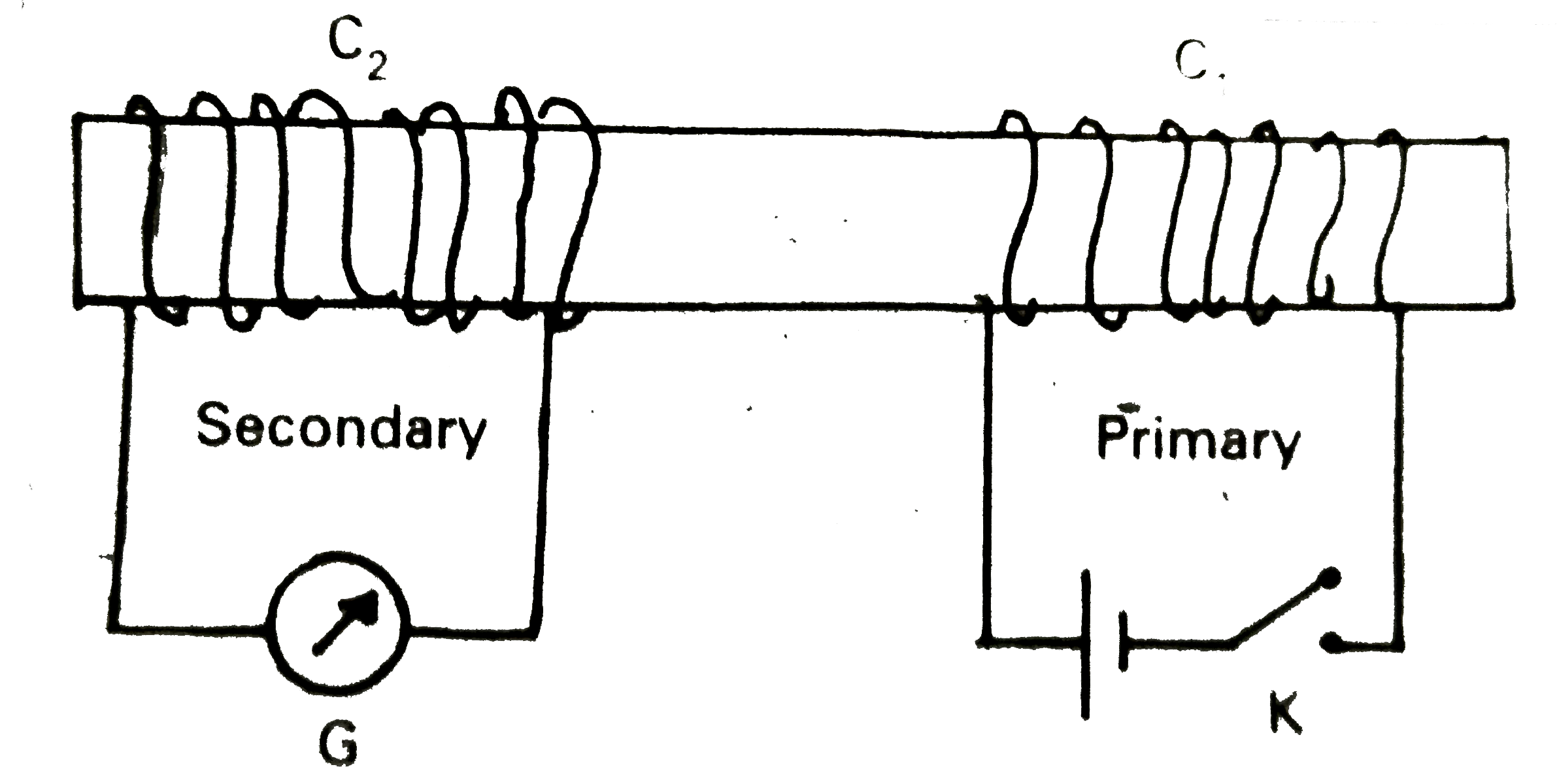Outline the path-breaking experiments of Faraday and Henry and highlight the contributions of these experiments to our understanding of electromagnetism.
Text Solution
Faraday's and Henry's experiments:
Experiment 1 : A magnet induces due to relative motion due to relative motion
(i) The apparatus consists of a coil with a galvanometer G and a bar magnet.
(ii) When the bar magnet (NS) was at rest, the galvanometer shows no deflection.
(iii) When North pole of the bar magnet moved towards the coil, galvanometer shows the deflection in one direction indicating the flow of current in the coil.
(iv) When North pole of the bar magnet moved away from the coil, galvanometer again showed the deflection but now in the opposite direction.
(v) The deflection of the galvanometer was large when the bar magnet was moved faster towards (or) away from the coil.
(vi) When south pole of the magnet was brought near the coil (or) moved away from the coil the deflections in the galvanometer are opposite to that observed with the north pole for similar movements.
Conclusion :
(i) Whenever there is a relative motion between a coil and a magnet, induced current flows through the coil.
(ii) Large induced e.m.f. (or) current is produced in the coil if the relative motion between magnet and the coil is large.
Experiment 2: Current induces current due to relative motion of coils :
(i) The bar magnet is replaced by a secondary coil C2 connected to a bàttery as shown in figure.
(ii) The steady current in the coil C2 produces a steady magnetic field.
(iii) As coil C2 is moved towards the coil C1 the galvanometer shows a deflection. This indicates current is induced in the coil C1.
(iv) When coil C2 is moved away, the galvanometer shows a deflection again, but opposite direction.
(v) The deflection lasts as long as coil C2 is in motion.
vi) When the coil C2 is held fixed and C1 is moved, the same effects are observed.
Conclusion : Induced e.m.f (or) current is produced, when there is a relative motion between the coils.
Experiment 3 : Changing current, induces current without relative motion :
(i) Faraday showed that this relative motion is not an absolute requirement.
(ii) Figure shows two coils C1andC2 held stationary.
(iii) Coil C1 is connected to a battery through a tap key K and coil C2 is connected to a galvanometer (G).
It is observed that the galvanometer shows a momentary deflection when the tap key K is pressed.

(v) The pointer in the gahanonter returns to zero immediately v the key is held pressed continoulsy, deftection in the galvanometer.
(vii) When the key is released, the galvanmeter showe deflection again but in the opposite direction ltbfrgt (viii) Deflection of the galvanometer incresses iot when wooden bar is replaced by iron bar.


|
Topper's Solved these Questions
- ELECTROMAGNETIC INDUCTION BOOK - VIKRAM PUBLICATION ( ANDHRA PUBLICATION)CHAPTER - ELECTROMAGNETIC INDUCTION EXERCISE - Textual Exercise
18 Videos
- ELECTROMAGNETIC INDUCTION BOOK - VIKRAM PUBLICATION ( ANDHRA PUBLICATION)CHAPTER - ELECTROMAGNETIC INDUCTION EXERCISE - Additional EXERCISES
15 Videos
- ELECTROMAGNETIC INDUCTION BOOK - VIKRAM PUBLICATION ( ANDHRA PUBLICATION)CHAPTER - ELECTROMAGNETIC INDUCTION EXERCISE - Short Answer Questions
4 Videos
- ELECTRIC CHARGES AND FIELDSBOOK - VIKRAM PUBLICATION ( ANDHRA PUBLICATION)CHAPTER - ELECTRIC CHARGES AND FIELDSEXERCISE - DAM SURE LAQ
1 Videos
- ELECTROMAGNETIC WAVEBOOK - VIKRAM PUBLICATION ( ANDHRA PUBLICATION)CHAPTER - ELECTROMAGNETIC WAVEEXERCISE - ADDITIONAL EXERCISES
19 Videos
Similar Questions
Knowledge Check
Mendel's primary contribution to our understanding of genetic inheritance was
Athe idea that genes are found on chromosomes.Bproviding a mechanism that explains patterns of inheritance.Cdescribing how genes are influenced by the environment.Ddetermining that the information contained in DNA codes for proteins.Whose experiment worked the beginning of the field of communication using electromagnetic waves ?
AHertzBMarconiCJagdihs Chandra BoseDMichelson and MorleyMaxwell's equations of electromagnetism and hertz experiments on generation and detection of electromagnetic waves established the
Aparticle nature of lightBwave nature of particleCwave natue of lightDmatter wave hypothesis
Mention the contribution of S.L. Miller's experiments on Origin of Life.
View SolutionDouble osmometer and capillary tube experiment help in understanding
View SolutionWrite an experiment to show that our palm is translucent.
View SolutionWhose experiment worked the beginning of the field of communication using electromagnetic waves ?
View SolutionIf a charged particle kept at rest experiences an electromagnetic force,
View Solution
